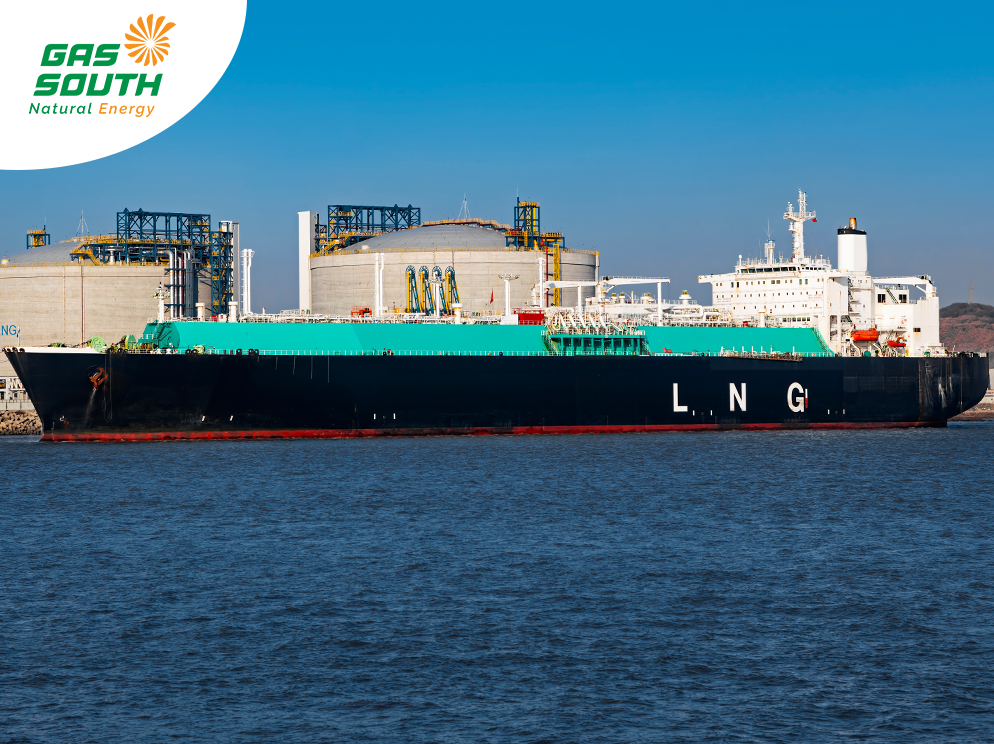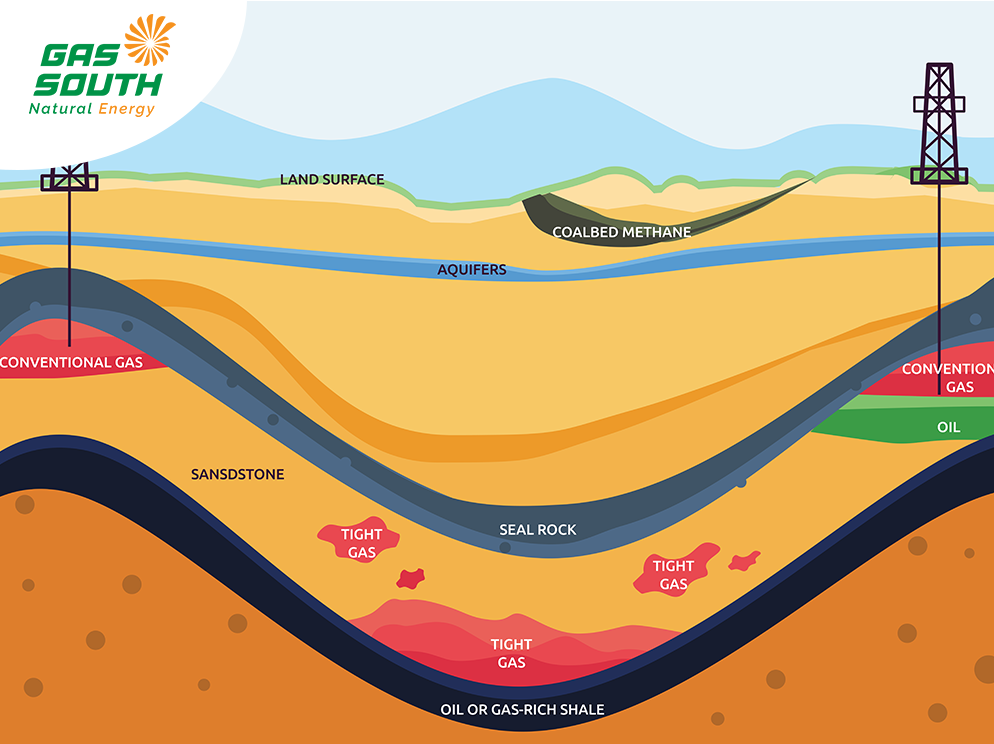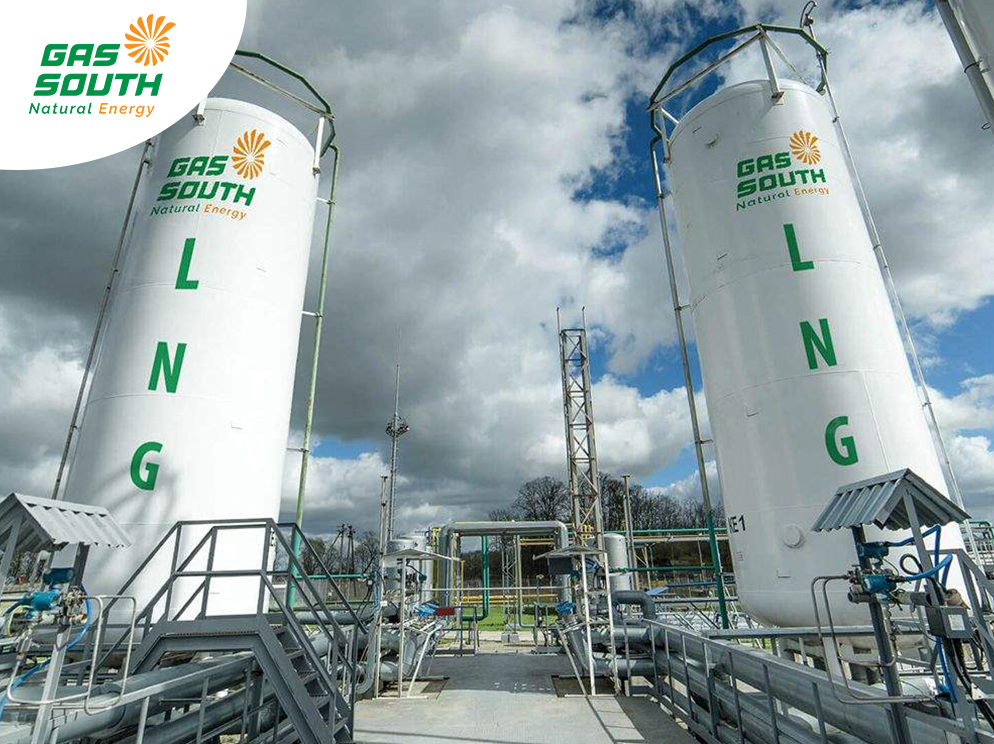Oil and natural gas are important resources of Vietnam, playing an essential role in the country's economic and energy development. With the remarkable potential for exploiting and using oil and natural gas, Vietnam has been making use of these resources to comply with energy needs, while ensuring energy security and environmental protection.
This article will let you know more about the process of oil and natural gas extraction in Vietnam, and the benefits, challenges, and potentials of this industry. Therefore, we will have a clearer view of the extremely important role and value that oil and natural gas bring to the country.
1. Understanding oil and natural gas in Vietnam
1.1. Concept of oil and natural gas
Petroleum, commonly referred to as oil, is a natural liquid that forms through the decomposition of ancient organisms in the Earth's crust over millions of years. It is extracted from deep underground reservoirs and undergoes refining processes to produce a range of energy products, including gasoline, diesel, and lubricants. Oil serves not only as a fuel for vehicles but also as a vital raw material in various industries and the production of diverse goods.
Natural gas is a compound of natural gasses, mainly methane (CH4). It is also formed by natural processes underground and is extracted from natural gas deposits. Natural gas is a clean and eco-friendly energy source. It is widely used as fuel in power plants, factories, restaurants, and households. Natural gas is also used in industry to manufacture many products such as fertilizers, plastics, and chemicals.
Both oil and natural gas are significant in providing energy for production, transportation, and daily activities. However, their use needs to be carefully managed to ensure sustainability and reduce negative impacts on the environment.

1.2. Reserves
Vietnam owns a significant amount of oil and natural gas. It is estimated that oil reserves in Vietnam are about 4.4 billion barrels, while natural gas reserves are about 150 billion m3. Oil is mainly distributed in central and southern regions, including the Mekong Delta and Nam Con Dao. At the same time, natural gas is also distributed in the Central and Southeast regions.
Although oil and natural gas are widely used in industry, transportation, and power generation. However, the exploitation of oil and natural gas also faces many challenges and disadvantages. Some of the disadvantages of oil include its possibility for environmental pollution, its high dependence on fossil fuels, and its negative impact on climate change. For natural gas, although it is considered a cleaner energy source than oil, the transportation and reservation of natural gas can cause safety risks and the risk of gas loss.
Hence, the responsible development and utilization of oil and natural gas reserves are vital in ensuring energy security, reducing dependence on imports, and fostering economic growth in Vietnam.
2. Distribution of oil and natural gas
Oil and natural gas in Vietnam are distributed in a diversified way across the regions of the country.
2.1. About oil:
-
The North: The oil fields in the Gulf of Tonkin are mainly located in the Hong River sedimentary basin - the first place for oil exploitation in Vietnam. People have discovered some important oil fields such as Dong Quan D, B10, Hong Long, Hoang Long, Yen Tu, Ham Rong, Ham Rong Nam, Ham Rong Dong, Thai Binh,...
-
Central: Oil fields in the Central region are mainly located in the Phu Khanh sedimentary basin, located off the South Central Coast, extending from Quang Ngai to Phan Thiet. The oil fields have huge investment and exploration costs.
-
The South: In the South, large sedimentary basins such as Cuu Long and Nam Con Son are where Vietnam's most important oil extraction activities happen. With the largest oil production in the country, these two sedimentary basins play an important role in the country's oil industry.
2.2. About natural gas:
-
The North: Vietnam's first natural gas has been exploited at the Tien Hai field (Thai Binh). However, gas production in this area is not as much as before.
-
Central: In the Central region, there are large natural gas fields such as Ca Voi Xanh, Ca Heo, Ca Map, and Tuy Hoa. It is one of the largest natural gas extraction areas and an important contributor to the country's natural gas supply.
-
The South: Gas exploitation in Vietnam is located mainly in the southern continental area. There are large gas fields such as Bach Ho, Dai Hung, Rong, Rang Dong, Hong Ngoc, and PM3 with huge total gas production.
This distribution represents the ability and potential to exploit oil and natural gas in areas with plentiful reserves and exploitation potential. Effective utilization of these resources not only complies with the country's energy needs but also makes an important contribution to Vietnam's economic development and energy security.

3. Status of oil and natural gas exploitation in Vietnam
Oil and natural gas exploitation in Vietnam is in a state of development and has great potential.
3.1. Oil exploitation
Vietnam has major oil basin clusters in the Gulf of Tonkin, Central and Southern Continental. with the South housing the largest exploited oil reserve. By the end of 2021, Vietnam's estimated oil reserves were about 4.4 billion barrels of oil, with an annual production capacity of about 13-14 million tons. Some of the most important oil fields include Bach Ho, Rang Dong, Te Giac Trang - Ca Ngu Vang fields.
-
Bach Ho: Bach Ho is the largest oil field in Vietnam, with a significant volume of crude oil. According to specific data, this field is producing about 38,000 tons of crude oil per day, accounting for 80% of the total crude oil exploited in Vietnam.
-
Rang Dong: From the year of operation: 1998 to 2005, the Rang Dong deposit produced 100 million barrels of oil. Currently, Rang Dong Mine produces about 40,000 barrels per day on average.
-
Te Giac Trang - Ca Ngu Vang: By the end of 2021, the total production of the Te Giac Trang and Ca Ngu Vang fields reached more than 124 million barrels of oil (98.6 million barrels of Te Giac Trang, 5.4 million barrels of Ca Ngu Vang). The operating time of the 2 mines is always maintained at a high level, more than 98%.
Read more: Some outstanding LNG projects in Vietnam today
3.2. Natural gas exploitation
Vietnam is also developing the exploitation of natural gas with many important basin clusters. In 2021, Vietnam's estimated natural gas reserves are about 150 billion m3, with an annual production capacity of about 10 billion m3. Important natural gas clusters include the basins in the Gulf of Tonkin, the Central region, and the southern seas.
-
Gulf of Tonkin: In 1981, Vietnam started to exploit natural gas at the field "Tien Hai C" in Thai Binh. Initially, the mine was estimated to have reserves of about 1.3 billion m3. Currently, there is only 1/3 million m3/year left for production of building materials.
-
Central: This area is implementing an important natural gas exploitation project, which is the Ca Voi Xanh project. This gas field has estimated reserves of about 150 billion m3 and annual gas production of about 9-10 billion m3.
-
Southern Sea area: The gas fields currently exploited mainly in the southern continental include Bach Ho, Dai Hung, Rong, Rang Dong, Hong Ngoc, and PM3. Gas production in this area can be up to 90 billion m3.
3.3. The situation of Vietnam outsourcing natural gas
As of today, Vietnam does not outsource its natural gas in the traditional sense of sending its resources abroad for processing or utilization. They are actively engaged in domestic production and development to meet their own growing demand and achieve self-sufficiency, then become a net exporter of the fuel in the long run.
In 2021, Vietnam's natural gas exports were relatively small, valued at around $2.62 million, with Cambodia as the primary recipient. However, Vietnam's recent completion of its first liquefied natural gas (LNG) terminal, the Thi Vai LNG Terminal, marks a significant shift. This terminal allows Vietnam to not only import LNG but also potentially export its own surplus natural gas in the future, once domestic needs are met and production increases.

In short, Vietnam is making positive developments in oil exploration and natural gas extraction. Significant reserves of oil and natural gas have been identified, and exploration projects are underway in key clusters across the country. The exploitation and use of this resource not only contributes to economic development but also ensures the energy security of the country.


